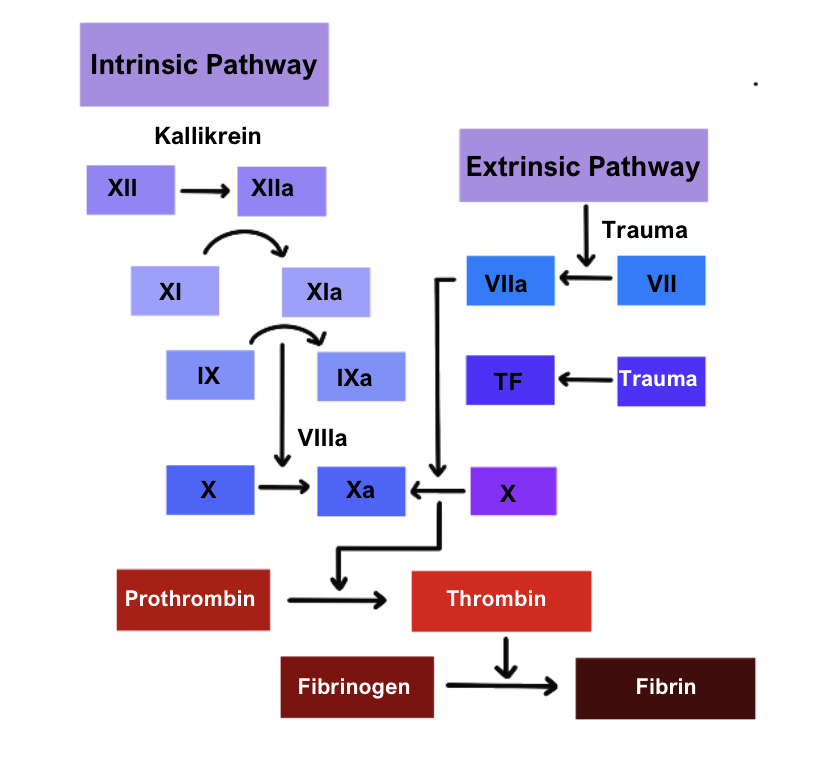Coagulation Studies
The coagulation cascade converts fibrinogen to fibrin
Coagulation factors are produced in the liver in an inactive state.
Extrinsic pathway requires Tissue Factor (activates Factor VII)
Intrinsic pathway is activated by subendothelial collagen

Prothrombin time (PT)/INR
This is used to test the extrinsic system.
It is expressed as a ratio compared to control
It is prolonged by Warfarin, Vitamin K deficiency, Liver disease
Activated partial thromboplastin time (APTT)
In this test, Kaolin is added to test the intrinsic system
The APTT is prolonged by Heparin, Haemophilia, Von Willebrand Disease
Thrombin time
This is where thrombin is added to convert fibrinogen to fibrin
This is prolonged by heparin, DIC, fibrin disorders
D-Dimer
This is a fibrin degradation product which is released during fibrinolysis.
Levels are increased in DIC, or in DVT and PE (but also raised in inflammation with infection + malignancy)
Reptilase
This is an enzyme found in snake venom which has a similar action to thrombin.
However, unlike thrombin, it is not affected by antithrombin III (and so heparin)
Therefore, if a person has a raised APTT and the reptilase is not raised, this suggests that the APTT was an artefact due to heparin contamination, not an organic coagulation disorder.
Therefore, this test is useful if you suspect a clotting abnormality in someone on heparin.
Reversal of High INR
N.B. One of the most important situations where you measure the INR is when giving warfarin.
The target for most patients will be INR = 2.5 in order to balance the clotting and bleeding risk.
If the INR gets very high, then the warfarin dose must be stopped, and INR reversed.
Major Bleed:
Stop Warfarin
Give IV Vitamin K and Prothrombin complex concentrate
INR >5 and minor bleed:
Stop warfarin
Give 1-3mg IV vitamin K and restart warfarin when INR<5
INR > 8 + no bleed:
Stop warfarin
Give Oral Vitamin K and restart warfarin when INR < 5
INR 5-8 + no bleed:
Withhold 1-2 doses of warfarin
Reduce maintenance dose warfarin
Disclaimer




